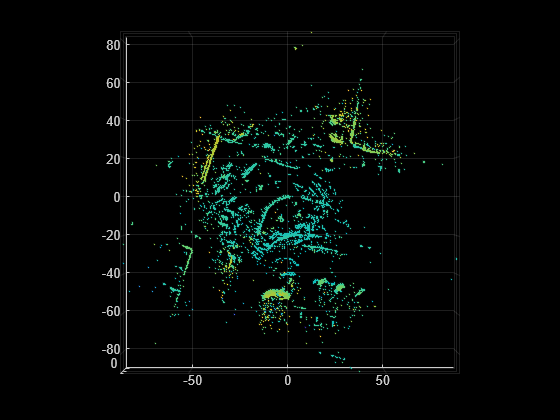pcmapndt
Description
The pcmapndt object creates a normal distributions transform
(NDT) map from a prebuilt point cloud map of the environment. The NDT map is a compressed,
memory-efficient representation suitable for localization. The object converts the point cloud
map into a set of voxels (3-D boxes), each represented by a 3-D normal distribution. Use the
selectSubmap
object function to select a submap within the map from a coarse position estimate. Use the
findPose object
function to localize the pose of the sensor based on the assembled map.
Creation
Description
ndtMap = pcmapndt(ptCloudMap,voxelSize)ptCloudMap.
Input Arguments
Properties
Object Functions
selectSubmap | Select submap within map |
isInsideSubmap | Check if query position is inside selected submap |
findPose | Localize point cloud within map using normal distributions transform (NDT) algorithm |
show | Visualize normal distributions transform (NDT) map |
Examples
References
Biber, P., and W. Strasser. “The Normal Distributions Transform: A New Approach to Laser Scan Matching.” In Proceedings 2003 IEEE/RSJ International Conference on Intelligent Robots and Systems (IROS 2003) (Cat. No.03CH37453) Vol. 3, 2743–48. Las Vegas, Nevada, USA: IEEE, 2003. https://doi.org/10.1109/IROS.2003.1249285.
[1] Magnusson, Martin. "The Three-Dimensional Normal-Distributions Transform: An Efficient Representation for Registration, Surface Analysis, and Loop Detection." PhD thesis, Örebro universitet, 2009. http://urn.kb.se/resolve?urn=urn:nbn:se:oru:diva-8458 urn:nbn:se:oru:diva-8458.
Extended Capabilities
Version History
Introduced in R2021a

